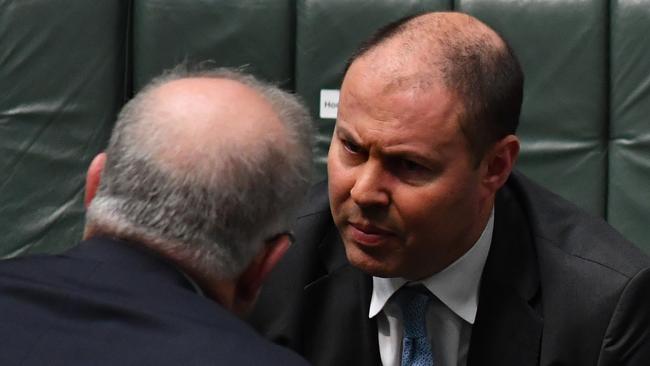Ending the debt and deficit fallacy

At least this pandemic might result in one good thing: the end of the notion that government deficits come from “reckless overspending” and are a “burden on our children”, and have to be paid back with budget surpluses.
They aren’t, and they don’t.
Australia’s federal deficit is probably going to balloon out to $150 billion both this year and next, and possibly more depending on what happens with the virus. Government debt will hit $1 trillion, possibly before the next election.
It would be a pretty foolish political party that described this as the result of reckless spending and a burden on future generations, and it would be completely crazy for them to campaign on paying it back.
“We are going to raise taxes, cut spending, and pay back that trillion-dollar debt quick smart” doesn’t feel like a terribly appealing election platform while the memory of the pandemic is fresh, even for a Coalition that got a lot of mileage out of that stuff in 2013. This time around it’s their own deficit and debt, so obviously not reckless at all.
And while Labor might be tempted to give them some of their own medicine by going on about reckless spending and record debt, no one’s going to buy a used return-to-surplus plan from them.
So the deficits and the trillion-dollar debt will be the elephant in the polling booth in May 2022, undiscussed or, better still, discussed sensibly for the first time in history.
A government deficit, we are now gratefully learning, simply represents a transfer of money from government to the private sector.
With the JobKeeper allowance the government is transferring $10 billion dollars per month to 3.3 million people via their employers. Another $4 billion per month is going to 1.7 million unemployed people on the JobSeeker dole.
There are a few other transfers, like the “Homebuilder” grants for new houses and renovations, and the instant asset write-offs, as well as the macroeconomic “automatic stabilisers” - the tendency of budgets to go into deficit in recessions and dampen their impact on the economy.
The most recent update from Treasurer Josh Frydenberg - on June 3 - put the total “support for workers, households and business” at $259 billion, or 13.3 per cent of GDP, but he didn’t say over what period.
When the Coalition came to power in 2013, government debt on issue was $257 billion and it was a vaguely credible promise that this could be paid back with surpluses resulting from the Coalition’s high quality financial management. In February it was $571 billion, so that went well.
But $1 trillion? Not repayable. We will have to move on from the idea that it is even debt – not just in Australia but around the world, where similar deficits are being racked up.
The United States is leading on this, as it is with the number of COVID-19 cases. The US government has announced three relief packages totalling $US2.8 trillion. The Federal Reserve’s balance sheet is now a little over $US7 trillion, an increase of $US2.8 trillion (it’s pure coincidence that those numbers are the same).
The Fed’s US government bond holdings total $US4.2 trillion, up from $US2.1 trillion a year ago; the Fed owns one-fifth of the overall US federal debt.
The Reserve Bank of Australia has bought about $60 billion worth of government bonds in its own version of quantitative easing.
The RBA’s bond holdings represent only about 11 per cent of the government debt, well short of what the Fed or the ECB and Bank of Japan are doing, but it’s also true that the RBA has effectively financed all of the JobKeeper program with new money.
Is that bad? No, it’s good. In fact, why should future taxpayers fund any of the 2020 pandemic rescue stimulus?
That idea is based on the fallacy that the government is like a household or a business, and that what it borrows must be paid back. What’s the difference? Simply that a government issues its own money.
The conventional wisdom is that if the debt was simply made to disappear by the central bank printing money, that this would cause hyperinflation and degrade the currency, but these are unrelated ideas. The exchange rate is a relative price that is a function of other currencies as well as the current account, and inflation is caused by excess demand of goods and services, not the amount of money.
Modern Monetary Theory, or MMT – for that’s what we’re talking about – does not suggest that the government has a magic pudding.
In a new book on the subject, called “The Deficit Myth”, economist Stephanie Kelton says: “Just because there are no financial constraints on the federal budget doesn’t mean there are no real limits to what the government can (and should) do. Every economy has its own internal speed limit, regulated by the availability of our real productive resources … If the government tries to spend too much into an economy that’s already running at full speed, inflation will accelerate.
“There are limits. However, the limits are not in the government’s ability to spend money or in the deficit, but in inflationary pressures and resources in the real economy. MMT distinguishes the real limits from delusional and unnecessary self-imposed constraints.”
* Alan Kohler is Editor in Chief of Eureka Report




